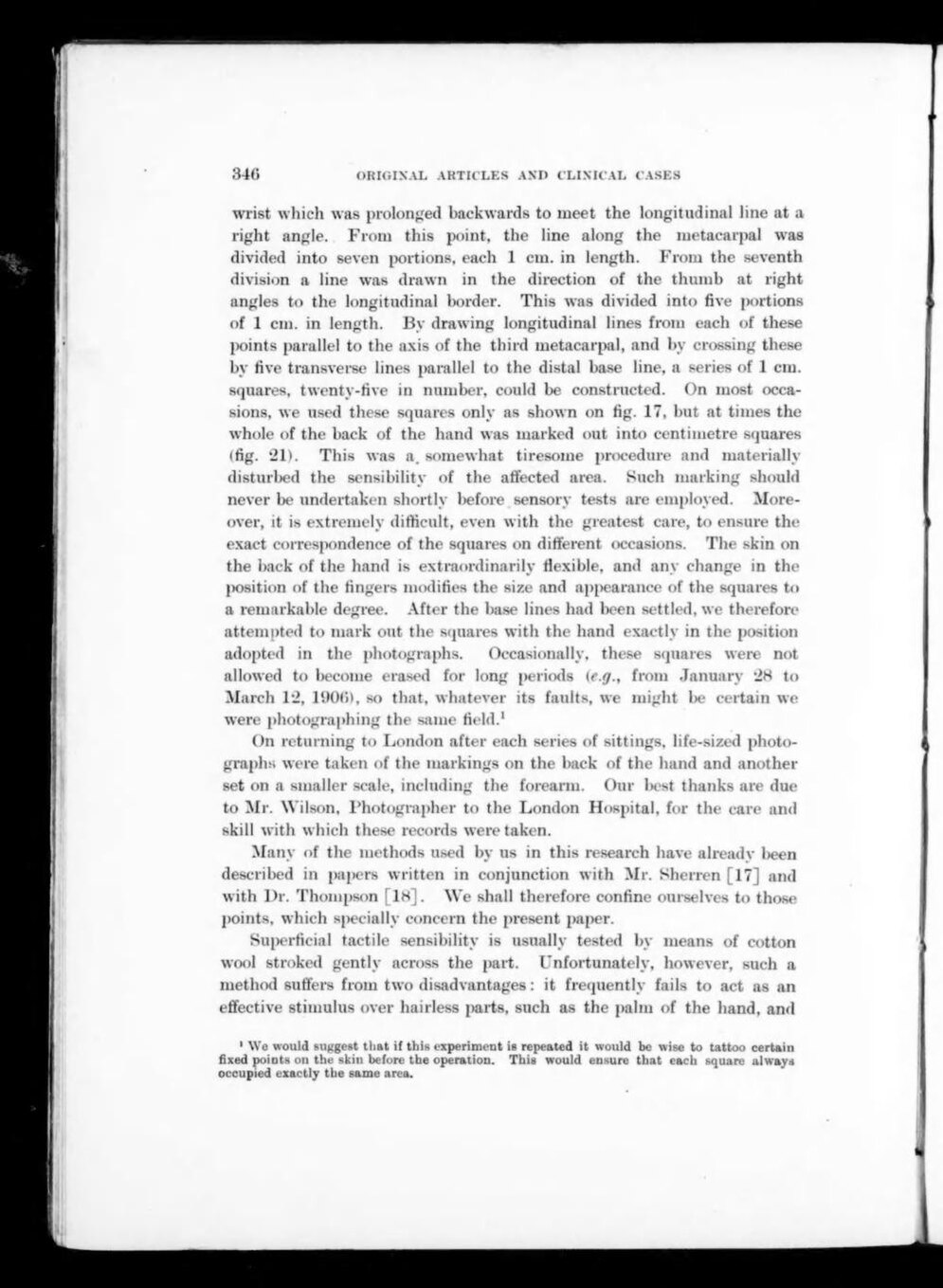wrist which was prolonged backwards to meet the longitudinal line at a right angle. From this point, the line along the metacarpal was divided into seven portions, each 1 cm. in length. From the seventh division a line was drawn in the direction of the thumb at right angles to the longitudinal border. This was divided into five portions of 1 cm. in length. By drawing longitudinal lines from each of these points parallel to the axis of the third metacarpal, and by crossing these by five transverse lines parallel to the distal base line, a series of 1 cm. squares, twenty-five in number, could be constructed. On most occasions, we used these squares only as shown on fig. 17, but at times the whole of the back of the hand was marked out into centimetre squares (fig. 21). This was a somewhat tiresome procedure and materially disturbed the sensibility of the affected area. Such marking should never be undertaken shortly before sensory tests are employed. Moreover, it is extremely difficult, even with the greatest care, to ensure the exact correspondence of the squares on different occasions. The skin on the back of the hand is extraordinarily flexible, and any change in the position of the fingers modifies the size and appearance of the squares to a remarkable degree. After the base lines had been settled, we therefore attempted to mark out the squares with the hand exactly in the position adopted in the photographs. Occasionally, these squares were not allowed to become erased for long periods (e.g., from January 28 to March 12, 1906), so that, whatever its faults, we might be certain we were photographing the same field.[1]
On returning to London after each series of sittings, life-sized photographs were taken of the markings on the back of the hand and another set on a smaller scale, including the forearm. Our best thanks are due to Mr. Wilson, Photographer to the London Hospital, for the care and skill with which these records were taken.
Many of the methods used by us in this research have already been described in papers written in conjunction with Mr. Sherren [17] and with Dr. Thompson [18]. We shall therefore confine ourselves to those points, which specially concern the present paper.
Superficial tactile sensibility is usually tested by means of cotton wool stroked gently across the part. Unfortunately, however, such a method suffers from two disadvantages: it frequently fails to act as an effective stimulus over hairless parts, such as the palm of the hand, and
- ↑ We would suggest that if this experiment is repeated it would be wise to tattoo certain fixed points on the skin before the operation. This would ensure that each square always occupied exactly the same area.
